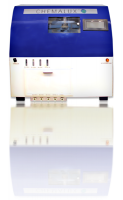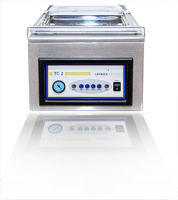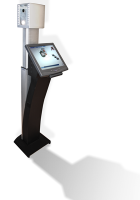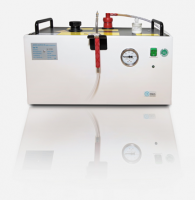ALTA s.r.o. Services
- ALTA is the only firm in Czech Republic that engraves images, letters and zodiac themes onto glasses lenses. Find more on the Laboratory page
- As the first Czech firm, we introduced use of NdYag laser for all repairs of metallic frames.
NdYag laser
Traditionally the repairs of metal frames in eye-care optical stores were done by electric welding or gas soldering. We have both capabilities in our lab. However, welding with oxygen with butane or oxygen with acetylene has a lot of disadvantages. The flame, despite being relatively hot and concentrated, is bound to burn the surroundings of the welded part. It is not suitable to weld titan, aluminum, beta titan and other types of metals used in eyewear. Without a protective atmosphere these metals immediately oxidize and joints break easily.

The use of NdYag laser is advantageous because it allows setting of a very precise laser pulse energy between 1W and 50W. It is also possible to set the pulse frequency and the width of the optical beam in the range from 0.2mm to 2.00 mm. The process is done in a protective atmosphere of argon gas. The operator observes the process using a stereo microscope. Soldering with laser is so precise that we can solder together a broken upper E guitar string.
In the past, some optical companies utilized services of dental technicians. They usually specialize on more lucrative business of welding of titanium frames only. So in general, welding and soldering of common monel or steel frames in optical shops was done with the use of gas torch or utilizing electrical arc welder (silver and borax). The result is usually rather big burnt area around the operating theater.
Alta
s.r.o., is the first and only optical company in Republic, welding all
repair with the use of NdYag laser. Basis of NdYag laser's process:
A
crystal of garnet yttrium Nd:Y3Al5O12 is doped by tri-ionized
neodymium. A molecule of neodymium has an approximately the same size as
yttrium molecule and it takes about 1% of the volume of the crystalline
host. In our equipment, YAG is optically excites through a xenon lamp.
The frequency of our laser is 1064 nm, within the infrared wavelength
spectrum, operated in the so called Q-switching mode. An optical switch
is inserted in the laser resonator cavity waiting for a maximum
population inversion in the neodymium ions before it opens. Then the
light wave runs through the cavity, depopulating the excited laser
medium at the moment of maximum population inversion.






For welding of different types of beta-titan, we have a minimum of 40 types of welding wires with a various content of additives. We cooperate with R&D institutions that provide us with a spectral analysis of materials used in eye-care optics to make the choice of a proper welding medium easier. Even though the laser technology is truly 21st century affair, it takes months and years of practice to get all the ingredients of the process right. The laser itself enables an endless combination of settings between ten variables. The know-how of exact combination and composition of welding wires and laser settings is strictly guarded company secret.


